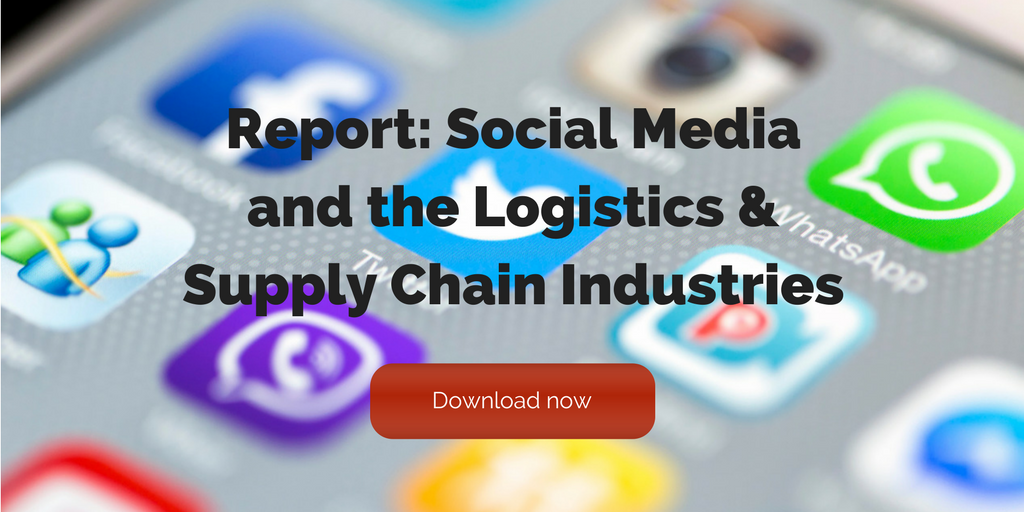
by Jennifer Hart Yim | Nov 14, 2017 | Blog, Current Events, Manufacturing & Distribution, Strategy, Supply Chain
No doubt 3D technology has transformed the world of business. There are numerous inspiring ways by which 3D technology has to reshape the future.
This post comes to us from Adam Robinson of Cerasis, a top freight logistics company and truckload freight broker.
If you are also instructed to learn about the impact of this revolutionary technology then you are at the right spot. Here are seven ways in which this new 3D trend will shape the future of manufacturing sector:
1. Boost Local Production
According to a recent survey based report it is come to know that 3D technology will allow the manufacturer to double the mass production level. It will enable the producers to reach their targets without increasing each unit production cost.
It will also reduce the shipment costs as a local manufacturer will no need to bring material from other countries. Instead, they could easily install 3D manufacturing plant in their own factory to cut the extra cost.
This way local business will easily boost their production process as well as reduce the cost of manufacturing.
2. More Customized Products
When you will engage 3D technology in the manufacturing process, you will get a chance to produce customized goods. It means that you could build everything from clothes to cars in a unique way.
According to a report, it is revealed that in coming years mobile users will get the opportunity to use 3D printing app.
In additional professional designers with also use 3D printing techniques to enter into the new age of industrial design. So, if you want to develop customized products to drive more revenue then you should use 3D printing method.
3. Best For Creativity
It is true to say that 3D technology is the best tool for creative lovers. This is because it enables manufacturer to open up new possibilities to grab the attention of more customers,
Many experts have predicted that the introduction of 3D technology will enable the creativity lovers to fulfill their every desire in an innovative manner.
Whether you want to design a phone or furniture mode, 3D technology will soon make it possible for you to accomplish your goals perfectly.
4. Avoid Copyright Issues
We all know the importance of copyrights to safeguard ones intellectual property. This is why businessmen hire lawyers to overcome a number of legal disputes that are rising due to copyright.
It is anticipated that 3D printing will secure the creativity of artists as everyone will hold ownership of their 3D design.
In case, you are also concerned because of the copyright issue then this technology will help you to overcome legal issues quickly.
5. A New Tool For Large-Scale Producers
Suffice to say that 3D technology is best tool for countries which are totally dependent on manufacturing industry. For instance, as China heavily depends on the manufacturing industry, 3D printing will enable China to target a huge domestic market.
In addition, it will also assist countries that are rapidly moving toward manufacturing sector. It gives them the great benefit to switch their operations to mass-manufacturing level all over the world. This strategy will benefit every growing economy to step in the next level in the coming future.
6. Build New Horizons For Every Industry
The 3D technology will revolutionize production process of every industry including the healthcare sector, education sector as well as food industry. The reason behind this is that scientists are working on 3D models that will facilitate every industry so that more people will take benefit from it.
From research, it is come to know that a popular hospital has printed a jawbone by 3D printer. If you also engage in health sectors then you will also find yourself building human body parts in a 3D manner. Many experts have also researched that 3D tools will also help to assemble chemical compounds and printing drugs.
7. Reduce Crime
It is predicted that new 3D technology will reduce the crime level. This is because people can keep guns that are made on 3D printers to secure themselves from criminals.
In addition, people can create CCTV camera and other 3D technology to catch the criminal in an easy manner. Moreover, it will also help in the production process of military equipment and chemical weapons.
Wrap-Up…
Therefore, it could be said now that 3D printing will offer uncountable benefits to small scales as well as the large-scale manufacturing industry to drive more revenue. If you also belong to the manufacturing industry then you should also tap into the potential of this superb technology.
Related posts:


by Fronetics | Nov 9, 2017 | Blog, Content Marketing, Customer Service, Marketing
Case studies have proven to be one of the most effective kinds of content in converting leads to buyers. Here are 4 strategies to getting customers to participate.
The 2017 Content Preferences Survey Report found that 78% of B2B buyers used vendor case studies as part of their purchasing decisions in the past 12 months. So why are customer testimonials and case studies so effective? Because buyers value the opinions of their peers and colleagues.
In fact, 89% of B2B marketers consider customer testimonials and case studies as the most effective kinds of content in converting buyers. It makes sense: User reviews offer an unbiased, credible experience regarding a company’s products or services. So potential customers do not have to rely exclusively on information the organization provides.
With stats like that, it is easy to see that case studies are compelling, but getting customers to participate in case studies can be very challenging. Here are 4 tips to help increase case study participation.
4 strategies to get customers involved in your case study
Create a formal process.
Start by getting support from your sales and marketing teams. With compelling stats about the success of case studies and customer testimonials, your internal teams will be jumping at the chance to help find participants. After all, these customers will help drive new sales.
Next you will need a formal submission process for sales and marketing team members to complete when they want to submit a customer’s name and information. You will also need a detailed document that explains to participants their level of involvement. People are busy! Keep case studies short and sweet so nominees are more likely to participate.
Be smart with your timing.
Case studies are most effective when you have happy, satisfied customers beaming about your products. Be smart with your timing and ask customers who just recently purchased your products or services. These customers are most likely excited about their recent purchase and may even go one step further in their reviews, offering tips and how-tos that will only add to the success of your case study.
Not sure if customers are happy with their recent purchase? Ask them! Send an email that asks if they’re satisfied. If their response shows excitement, ask if they’d be willing to participate.
Treat the case study as a mutual opportunity
Case studies can be beneficial to you and your participants, and should be treated as such. “Many customers already think doing business with you is a favor they did. You should not make them feel like they’re going to be doing you another favor by doing a case study,” writes Ayodeji Onibalusi for Effective Inbound Marketing.
Let customers see your case study as an opportunity for them. Explain the benefits, including publicity, they will achieve from participating. Post your case study to social media, link to your website, and send to existing and potential customers. A case study is something your participants can enjoy and won’t want to miss out on.
Find alternatives if customer polices prohibit case studies
Company policies that restrict or forbid some customers from participating in case studies are a big roadblock. Your company could have strict polices about customer testimonials, or customers might have restrictive company policies that limit their participation. These can be a challenge but don’t have to quash your opportunity to conduct successful case studies.
Get creative if you must! Conduct large group interviews and take samples of customer testimonials. Or use the average results from the interview to create an anonymous case study. If you’re still running into issues, simply ask customers for a one-sentence review that you can post without their information. These short reviews can still have a big impact on potential customers.
Case studies have proven they are worth their time and energy. Recommendations from actual customers are a powerful tool. Use these four strategies to conduct case studies that will help attract new customers and drive sales.
Related posts:


by Fronetics | Nov 8, 2017 | Blog, Data/Analytics
Marcus Tober, Searchmetrics founder, suggests three key ways to make your content more relevant and to improve your SEO visibility.
We talk a lot about the importance of content, like here and here. Content is everywhere, and companies are working hard to continually produce new content. But not all content is created equal.
Searchmetrics founder Marcus Tober discusses how data is changing the relevancy of content in his conference talk, Mastering the World of Deep Learning: How Big Data Is Making Content More Relevant in Search. As a pioneer in search-analytics software, Tober has watched search engines become more advanced at figuring out which web pages people will find relevant. Through years of research, Tober offers three lessons to make your content more relevant.
3 ways to make your content more relevant
Develop your content niche.
“Experts are not called upon because they are the smartest person in every room; they are called upon because they are the smartest person in a specific room.” John Gordon
Find your area of expertise, or niche, in your market and focus your content around this topic. Instead of writing broadly about various subjects relevant to your industry, your writers should tackle tough questions and introduce cutting-edge thought leadership in one key area that defines your company’s strength.
Marcus says, “This means that if you specialize in something and make it really good because you understand the user, you can have great search performance” compared with a huge site that produces content about everything.
Through this valuable and focused content, your company will stand out as a leader in your industry. Audiences will know how to categorize you, which sounds like a bad thing, but isn’t. When they have a specific question, they know to turn to you as a specific expert.
Get rid of ROT.
ROT (redundant, outdated, and trivial content) can sink your website. “Think about your house. We’re all a bit messy and a bit lazy. Likewise, I can imagine that you have a lot of content that maybe you should get rid of or should merge with something else you have,” says Tober.
Many companies keep older ROT content because of the volume of posts they want under their belts. Tober worked with a German company, Pflege.de (similar to care.com), which was afraid of cleaning out its ROT because of the internal links and the possibility of older posts still bringing in traffic.
On Tober’s recommendation, Pflege purged ROT and lost 95% of its content. 95%! The content the company was left with was more relevant and ranked higher with search engines. Pflege’s SEO visibility grew 240% within a few short months.
Update remaining content to address user intentions.
It’s not enough to just get rid of ROT. You also need to keep an eye on older content and make sure you continue to update as needed. “You have to make what’s left really good,” Marcus says.
What is meant by content that is “really good?” He means content that addresses people’s intentions – content that meets the information needs underlying the keywords and phrases they use.
Big data can help brands track their older content and make changes to address audience questions and relevancy. Tober’s company, Searchmetrics, is an example of a data service that helps companies take an in-depth look at older content and how it addresses user intentions. When brands update content to address specific wants and needs, it can boost online visibility and reveal new potential for older posts.
Improving your company’s SEO visibility can be easier to achieve than you think. Using these three steps, you can get ahead of search engines and place your brand in front of untapped audiences.
Related posts:


by Fronetics | Nov 6, 2017 | Blog, Content Marketing, Marketing
Use these four tips to earn high-quality backlinks that will boost your company’s search engine ranking.
It’s no secret that backlinks can help your search engine rankings. Backlinks are any link on another website that points (or links) back to your website. Since the 1990s, search engines have used backlinks as a bit of a popularity contest: the more you had, the more popular your website became.
It didn’t take long for companies to hunt for backlinks, creating relationships with other companies in the same industry for the sole benefit of getting links to their websites. But like all relationships, link building can be abused and, often times, only beneficial to one party. Pursuing links for search engine ranking alone creates a negative mindset, leading to uneasy relationships, damaged brand reputation, and low-quality, spammy links.
How can you achieve high-quality backlinks?
Let’s start by understanding what constitutes a high-quality backlink. SEO consultant Mark Walters defines them as links that:
- Are from a relevant and trusted source
- Have anchor text that matches your keywords
- Are on a page with Google’s PageRank
- Are next to backlinks to authority websites
- Are from different sources
- Are not reciprocal
- Are on pages with few other backlinks
Now that you know what defines a high-quality backlink, how can your company achieve these organic relationships? The answer is hard work.
Here are 4 tips to help your efforts get high-quality backlinks.
1. Create the best content available on your topic
The best content is content that is unique. Not only is original content SEO friendly, original content is audience friendly. In one minute, users share 300 hours of video on YouTube and tweet nearly 400,000 tweets times. If you want content that stands out, you need content that differs from that of the rest of the pack.
You can make content stand out by using winning headlines, graphics, images, and with great writing. Create every single piece of content with your current and prospective customers in mind. Content that attracts and engages audiences effectively communicates valuable information, providing knowledge to help guide informed decisions. Creating reliable information will establish your website and business as a thought leader within your industry, and other companies will start to take notice.
2. Perform exclusive interviews with industry experts and/or influencers
The strategy of interviewing industry experts is becoming more and more common. Here at Fronetics we often interview influencers. The draw from big names helps bring in new traffic to our site, as well as provide readers with the latest happenings in our industry.
“The benefits of creating content around authority figures in your space is vast, such as bringing recognizable authority names to your site, while also having the opportunity for such content to be shared by featured experts as well. The end result could create lots of great content for your site, while also bringing in a nice consistent supply of new traffic as well.” Writes Zac Johnson for Business 2 Community.
3. Create custom infographics
Images are a fail-safe way to create engaging content, but infographics do more than just give readers visual knowledge. Infographics also help achieve backlinks. They provide interesting and valuable information using images, giving readers the knowledge without having to read through heavy text. The most popular infographics incorporate amazing design and well-researched statistics.
According to HubSpot, social media users share and like infographics 3x more than other any other type of content. Good infographics have the ability to make your content go viral, generate tons of high-quality back-links, and improve your site’s overall SEO.
4. Participate in collaborative content marketing
Collaborative content has many benefits, but one of the biggest is reach. Your collaborators have their own followers and platforms. Combine that with your audiences, and your content is already reaching more people. These collaborations save time and money and will earn you backlinks through the other participants. Collaborative content will help drive organic traffic, provide valuable and relevant information, and introduce a new voice to your content.
Using these four strategies will help your company earn high-quality backlinks and start improving your search enginge ranking. Your higher rankings will come from organic backlinks that your hard work helped to create.
Related posts:


by Fronetics | Nov 2, 2017 | Blog, Data/Analytics, Logistics, Strategy, Supply Chain
In a recent study, MIT found that companies that focus on 5 key initiatives to improve their supply chain analytics can have a big impact on their bottom line.
Some supply chain companies are leaning on the power of analytics to help streamline their processes and get ahead of their competitors. But many companies have struggled to embrace the relationship between using analytics and implementing changes that can improve business performance.
The study, published by the MIT Sloan Management Review, asked 353 participants to discuss their understanding of their companies’ analytics systems. The results showed that though most companies have an analytics system in place, very few are using the results to implement necessary changes.
Obstacles to fully utilizing analytics included inaccurate data, cost, and lack of timely data. But the benefits far outweigh the challenges. Hanesbrand Inc., for example, used predictive analytics to make changes in their inventory processes and have since seen an increase in their production and purchase orders.
So how can your company start to incorporate supply chain analytics into your company culture?
Here are 5 tips to help kick-start your analytics implementation:
1. Supply chain analytics initiatives need a top-down mandate
In order to achieve analytical success that has an influence over organizational process, it’s imperative that upper-level management use the analytical systems. Executives need to promote and utilize the systems. Buy-in from managers and team members will be seamless when it’s coming from the top. David Dittmann, director of business intelligence and analytics services at Procter & Gamble Co., stresses that “it is impossible to win over thousands of people one small analytics victory at a time. Analytics must be a top-down mandate to succeed from an organizational perspective.”
2. The simpler the model, the more likely the use
If you want your company to embrace an analytics system, it’s important that the model is simple and easy to grasp. If employees don’t understand how to use the analytics or apply the results, they won’t take the time to implement the system. The more complex a system is, the greater the potential for team members to dismiss it. The Cleo Integration Suite (CIS), for example, promotes itself as an easy-to-use platform that can integrate seamlessly into your pre-existing software. CIS understands that supply chain companies need systems that are elementary to incorporate to achieve results.
3. Business knowledge is essential
Executives in the survey noted that an in-depth understanding of business processes and their effect on the bottom line is critical to supply chain analytics success. To develop the most effective model, companies need to have insight into all of the processes that make their company successful and be able to incorporate the results into these processes. Without this foundational information, the analytics are just “fun facts.”
4. Trust in the numbers
Time is a key factor in successful analytics implementation. In order to achieve timely results, organizations have to trust in the numbers the analytics provides them. “Trust can be built through a closed-loop change management effort that is centered on performance metrics that accurately reflect the current state of the supply chain system.” writes Melissa R. Bowers, Adam G. Petrie, and Mary C. Holcomb. Once these metrics are in place, it is easy to gauge the results against past processes.
Coca-Cola Global implemented a check-and-balances system to cultivate trust in their analytics. Anytime an employee chose to override the analytics system, it gave them feedback to see if their manual adjustments resulted in an improvement or a setback, creating trust in the employees and their dependence on the data.
5. Implement mechanisms to help develop analytics professionals gain business knowledge
Many supply chain companies are hiring analytics professionals to help implement these systems into their organizations. Though experts in their field, it’s important for these trained analytics professionals to learn about all aspects of your business. This business knowledge creates an open relationship between the business and the analytics, creating more opportunities for the numbers to aid in the processes.
Out are the days of order tracking and point of sales data, and in are the days of big data and analytics. Supply chain companies are quickly realizing the need to understand and implement these analytics systems into their day-to-day processes. Creating efficiency and savings using these systems is easier than you think.
Related posts:







